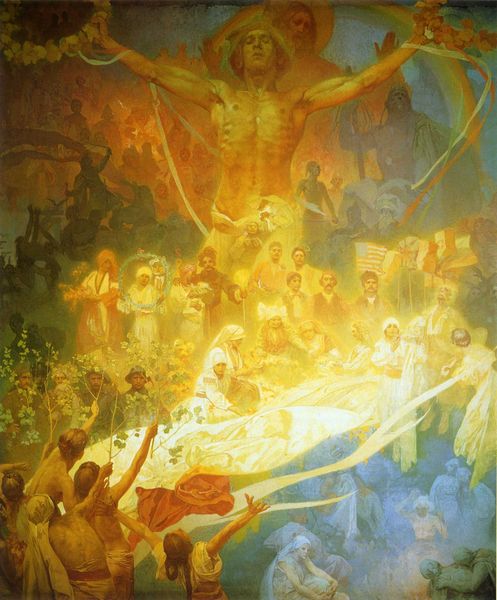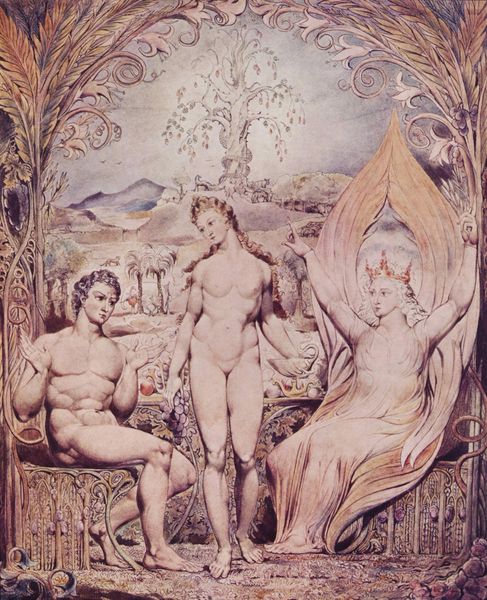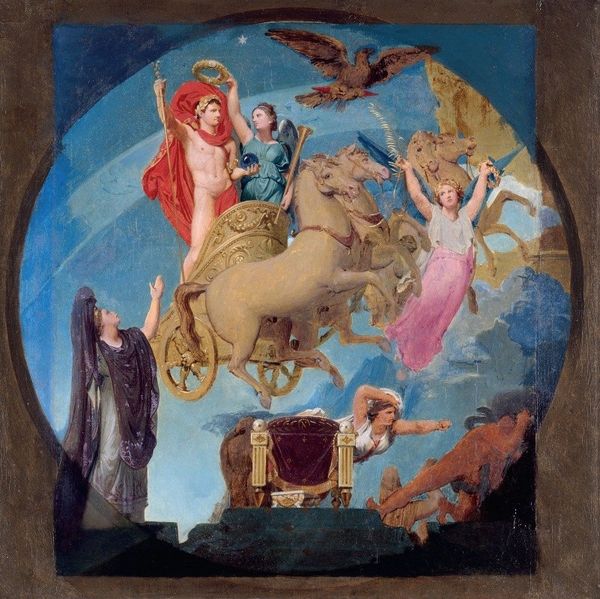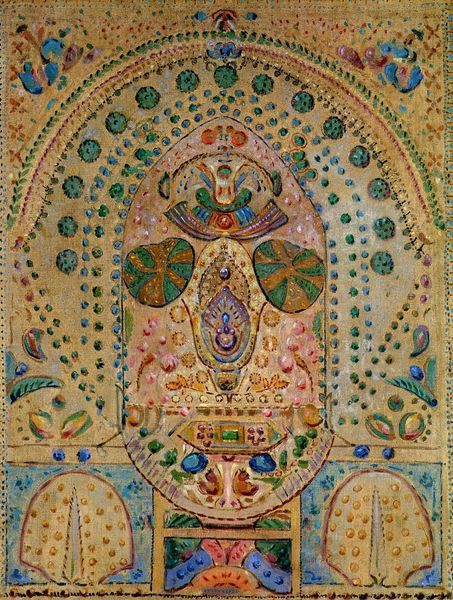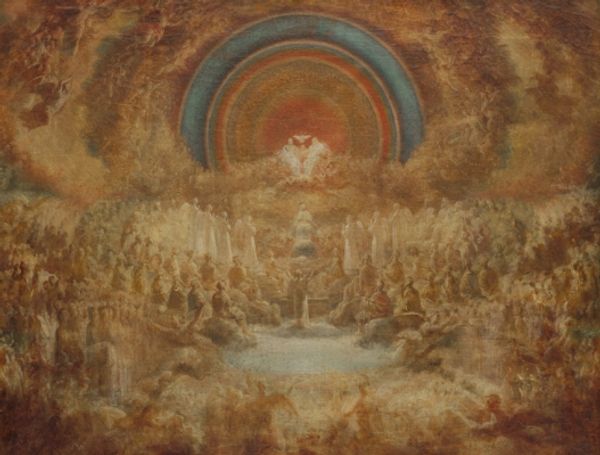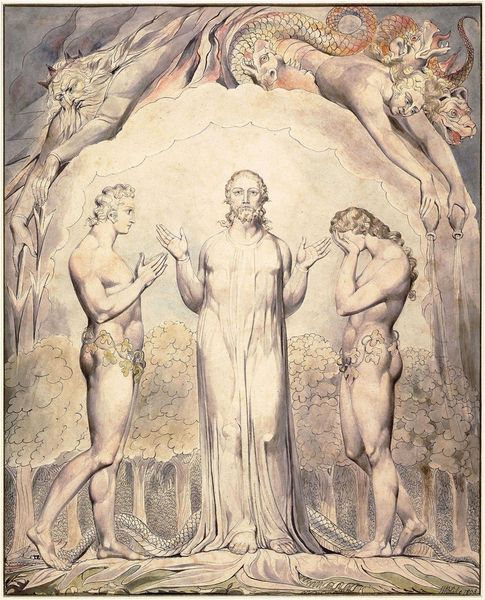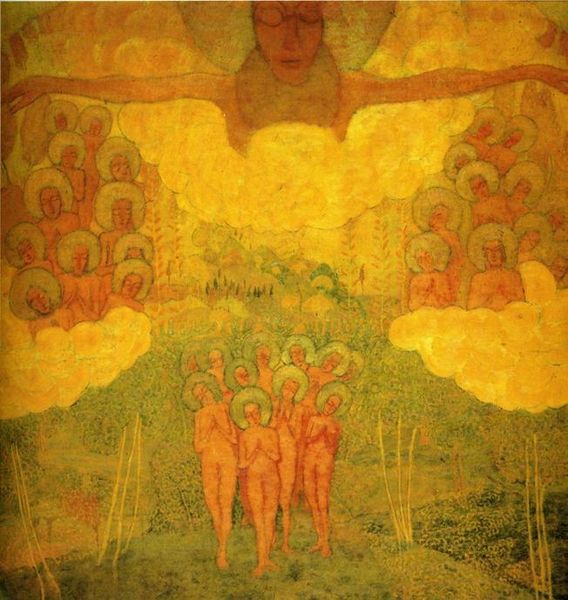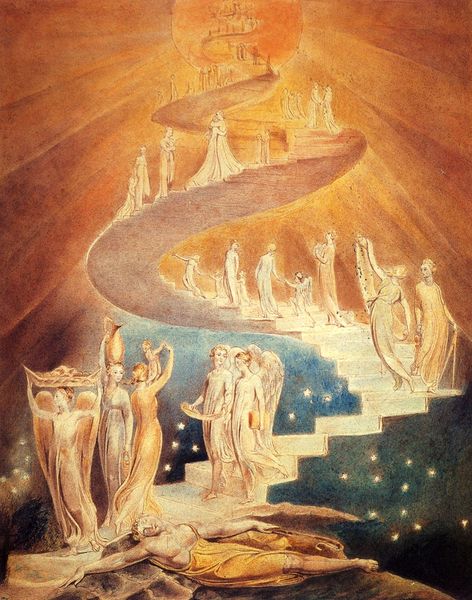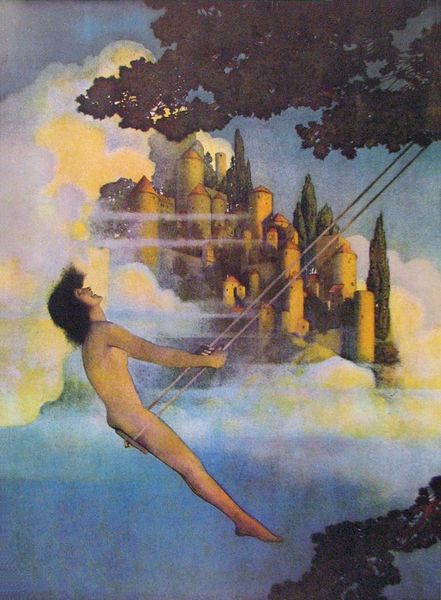
oil-paint
#
gouache
#
water colours
#
allegory
#
oil-paint
#
landscape
#
figuration
#
oil painting
#
coloured pencil
#
underpainting
#
romanticism
#
mythology
#
painting painterly
Copyright: Public domain
Curator: This painting is Philipp Otto Runge's "The Morning," created in 1808. It employs oil paint in an allegorical scene brimming with symbolism. Editor: My immediate impression is one of otherworldly serenity. The pastel palette, the soft light—it evokes a dreamlike, almost ethereal feeling. Curator: Indeed. Runge intended this as part of a cycle representing different times of day. He situated this image within Romanticism’s broader fascination with nature and the spiritual realm. The art academies and salons of the period embraced symbolism, where the use of figures like cherubs served as allegorical representations of nature's awakening and rebirth, resonating deeply with contemporary philosophies on the individual’s relationship with the natural world. Editor: Looking through a contemporary, intersectional lens, I'm struck by how the idealized forms intersect with prevailing notions of beauty and innocence, almost pushing the boundary to obscuring any diverse reflection of experience. Can we analyze these images beyond traditional interpretations? The positioning of these cherubic figures seems almost strategic in upholding standards and values within society during that period. Curator: That’s a critical point. While Runge sought to capture universal ideals, these artistic choices must be analyzed concerning societal structures of power. Museums' decisions to valorize these works have repercussions as they are framed to create an illusion, potentially overlooking various histories of race, gender, and social identity. Runge conceived this piece amidst considerable political and social upheaval during the Napoleonic Wars; this can't be disentangled from his aesthetic and allegorical vision. Editor: And I notice the painting incorporates the frame into the composition with the bulbous forms and cherubs, creating almost a theater of life. How do we account for his perspective in depicting nature and, indeed, childhood? Curator: Considering this, we might investigate Runge’s patron relationships to see the impact and influence they have on shaping his vision as an artist and how the painting's display might be perceived and contested in various sociopolitical circumstances. It certainly urges a multi-layered approach, engaging both historical context and critical theory. Editor: Agreed. It serves as a crucial reminder of the complex interplay between art, society, and identity, promoting important discussions about what we see and, more importantly, what remains unseen. Curator: This piece highlights how a work initially conceived to embody Romantic ideals can still invite discourse about image representation and our present historical conditions.
Comments
No comments
Be the first to comment and join the conversation on the ultimate creative platform.
